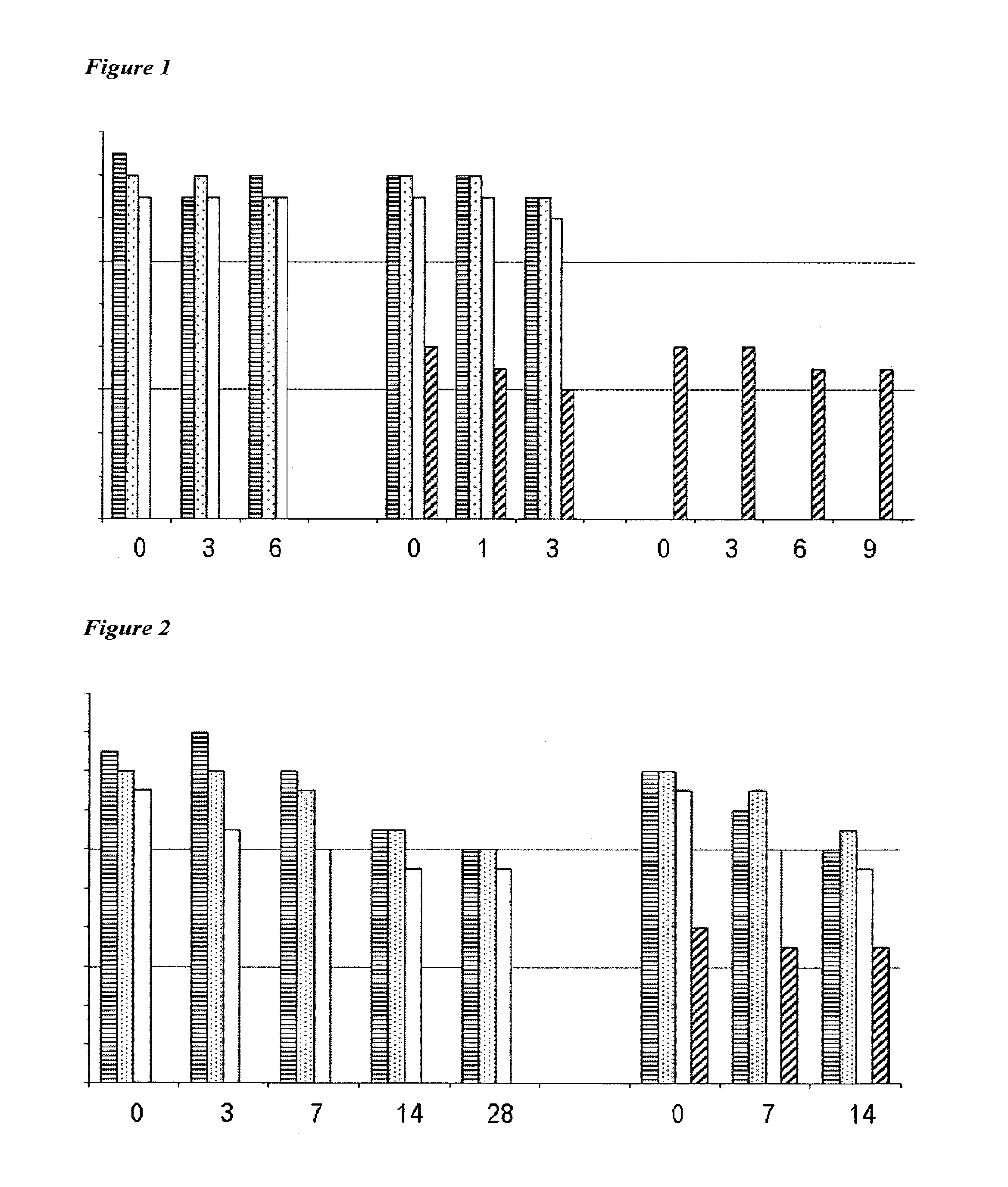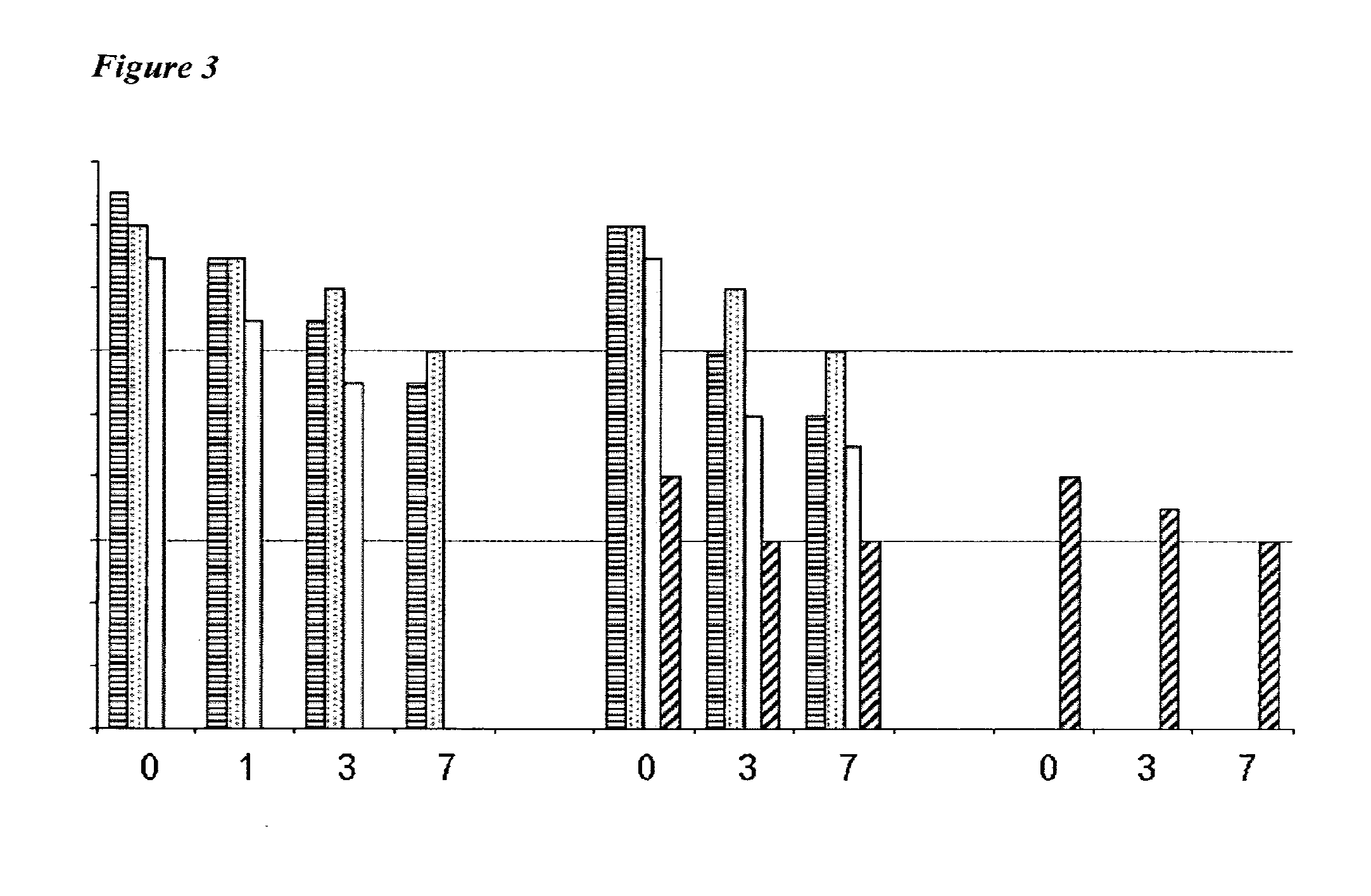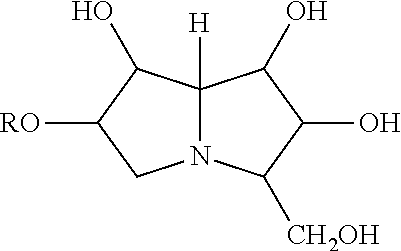Vaccines Including Antigen From Four Strains of Influenza Virus
a technology of influenza virus and vaccines, applied in the field of vaccines for protecting against influenza virus infection, can solve the problems of reducing the match between vaccine strains and circulating strains, adding a time-consuming phase, and a large amount of egg-based manufacturing
- Summary
- Abstract
- Description
- Claims
- Application Information
AI Technical Summary
Benefits of technology
Problems solved by technology
Method used
Image
Examples
Embodiment Construction
A-A-B-B Vaccines
[0257]In recent years, Victoria / 2 / 87-like and Yamagata / 16 / 88-like lineages (‘V’ and ‘Y’ lineages) of influenza B virus have co-circulated, and their respective contributions to the overall seasonal epidemic illness burden has alternated from year to year. Vaccines in use over recent years have included either a V lineage or a Y lineage. From the 2001 / 02 season, the percentage of all US influenza cases that could potentially have been averted if the vaccine had included the other lineage has ranged from 0 to 29.9%, and in four of the five years starting with 2001 / 02 the proportion of influenza cases due to the mismatched B virus was actually greater than the proportion attributable to A / H1N1 virus:
BBBYVMissingYearNH3N2H1N1alllineagelineagecoverage20051019 55%13.2%31.5% 5.8%25.6%25.6%2006(18.7%)(81.3%)2004107565.9% 1% 33%24.5% 8.5% 8.5%2005(74.4%)(25.6%)2003102492.6% 0.3% 6.9% 6.4% 0.4% 6.4%2004(92.9%) (7%)200269920.5%41.1%38.5%0.01%38.5%—2003 (0.1%)(99.9%)2001690...
PUM
| Property | Measurement | Unit |
|---|---|---|
| mass | aaaaa | aaaaa |
| mass | aaaaa | aaaaa |
| volume | aaaaa | aaaaa |
Abstract
Description
Claims
Application Information
 Login to View More
Login to View More - R&D
- Intellectual Property
- Life Sciences
- Materials
- Tech Scout
- Unparalleled Data Quality
- Higher Quality Content
- 60% Fewer Hallucinations
Browse by: Latest US Patents, China's latest patents, Technical Efficacy Thesaurus, Application Domain, Technology Topic, Popular Technical Reports.
© 2025 PatSnap. All rights reserved.Legal|Privacy policy|Modern Slavery Act Transparency Statement|Sitemap|About US| Contact US: help@patsnap.com



